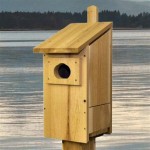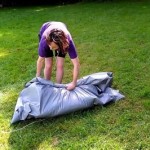How Do I Make Worm Bedding?
Composting with worms, also known as vermicomposting, is a fascinating and rewarding practice that turns organic waste into nutrient-rich compost. Creating a suitable bedding for your worm bin is essential for their well-being and the overall success of your composting system.
1. Choose the Right Materials:
The ideal worm bedding is a mixture of materials that provides aeration, moisture retention, and a food source for your worms.
- Shredded Paper:- Newspaper, junk mail, and cardboard are excellent sources of carbon and help maintain the proper balance of moisture.
- Avoid glossy or colored paper, as they may contain harmful chemicals.
- Fallen leaves are rich in essential nutrients and provide structure to the bedding.
- Use dried leaves rather than fresh ones, as fresh leaves can compact and become too moist.
- Straw helps maintain air pockets and prevents compaction, ensuring good drainage.
- Choose clean, untreated straw to avoid any potential contaminants.
- Coconut coir is a sustainable and absorbent material that holds moisture well.
- It also helps regulate the pH level of the bedding.
2. Prepare the Materials:
Before adding the materials to your worm bin, it's important to prepare them properly:
- Shred Paper:- Tear or shred paper into small pieces for better decomposition.
- Remove any glossy or colored sections.
- Break down leaves into smaller pieces to create more surface area for worms to access.
- Cut straw into shorter lengths to avoid tangling and compaction.
- If using compressed coconut coir, soak it in water according to the package instructions before adding it to the bin.
3. Mix and Moisten:
Once the materials are prepared, combine them in a large container or on a tarp.
- Start with a base layer of shredded paper or coconut coir.
- Add layers of dry leaves, straw, and food scraps (such as vegetable peels, fruit scraps, or tea bags) in between.
- Moisten the mixture thoroughly with water. It should feel damp but not soggy.
- Use a pitchfork or a shovel to mix the materials until they are evenly distributed.
4. Introduce the Worms:
When the bedding is ready, you can introduce your worms to their new home.
- Place the bedding mixture in your worm bin, filling it about halfway.
- Add a layer of food scraps or shredded paper on top.
- Gently place your worms onto the bedding.
- Cover the bin with its lid.
5. Maintain Ideal Conditions:
Make sure to maintain the following conditions for optimal worm activity and compost production:
- Temperature: Most worms thrive in temperatures between 55°F and 75°F (13°C to 24°C). - Moisture: Keep the bedding moist but not soggy. Check the moisture level by squeezing a handful of bedding. If water drips out, it's too wet. - Airflow: Proper aeration is vital for worms to breathe and decompose organic matter. - pH Level: Aim for a pH level between 6.5 and 7.5. You can use a pH meter or test strips to monitor the pH level. By following these steps, you can create an ideal worm bedding that supports the thriving population of worms and produces nutrient-rich compost for your garden.
Diy Worm Composting Bin How To Do It Right Uncle Jims Farm

How To Make The Best Red Worm Bedding Ultimate Guide

How To Make Your Own Worm Farm Vermiculture

Worm Bedding 9 Awesome Choices

Vermibag Ep 02 How To Make Great Worm Bedding Watch 72 For Additional Tips

Redworm Farming Backwoods Home

Building A Worm Bin

How To Make Our Diy Worm Bin Growingagreenerworld Com

How To Build A Worm Bed Start Small Farm Scout Life

All You Ever Wanted To Know About Worm Bedding








